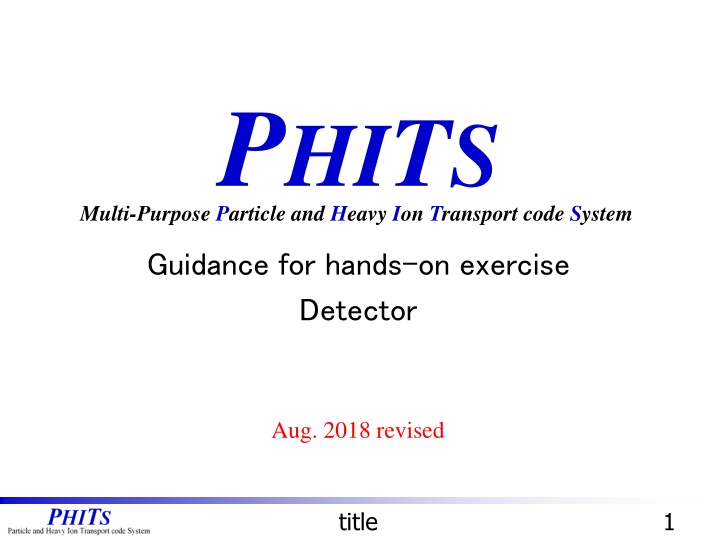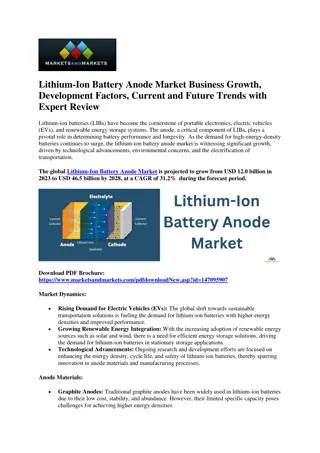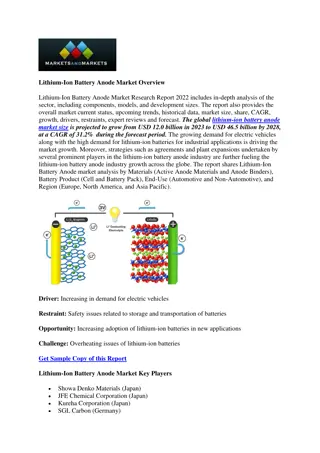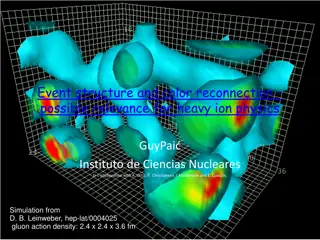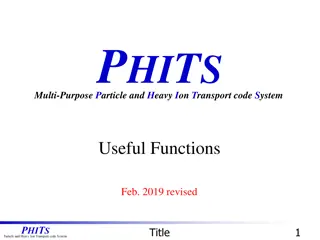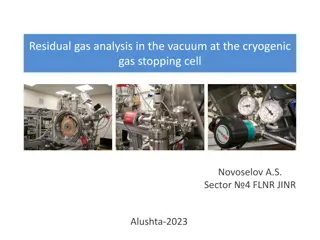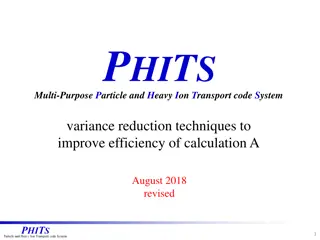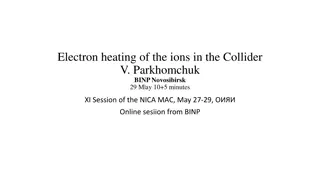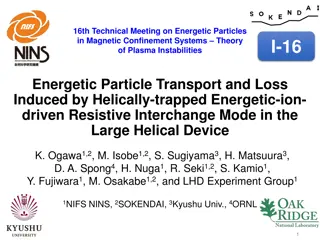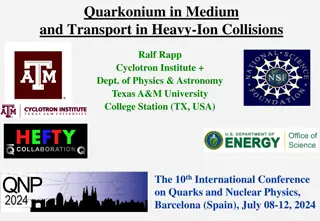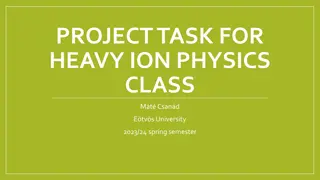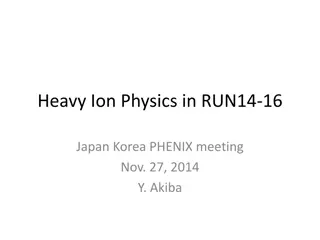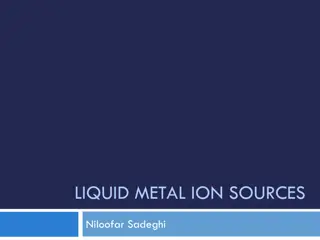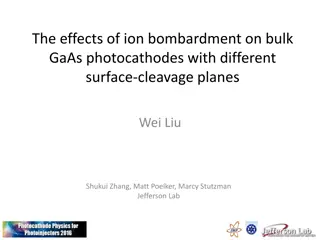PHITS Multi-Purpose Particle and Heavy Ion Transport Code System Guidance for Hands-On Exercise
Explore the hands-on exercise using the PHITS Multi-Purpose Particle and Heavy Ion Transport code system. Follow the guided steps to manipulate parameters, change detectors, and observe results for neutron and photon sources. Discover the impacts of neutron energy, detector materials, and gamma energy on the simulation outcomes. Dive into creating a Compton camera setup with Si detectors and a pencil beam gamma ray source. Enhance your understanding of radiation detection and analysis through practical simulations.
Download Presentation

Please find below an Image/Link to download the presentation.
The content on the website is provided AS IS for your information and personal use only. It may not be sold, licensed, or shared on other websites without obtaining consent from the author.If you encounter any issues during the download, it is possible that the publisher has removed the file from their server.
You are allowed to download the files provided on this website for personal or commercial use, subject to the condition that they are used lawfully. All files are the property of their respective owners.
The content on the website is provided AS IS for your information and personal use only. It may not be sold, licensed, or shared on other websites without obtaining consent from the author.
E N D
Presentation Transcript
PHITS Multi-Purpose Particle and Heavy Ion Transport code System Guidance for hands-on exercise Detector Aug. 2018 revised title 1
Step 0 start.inp is taken from \phits\recommendation\DetectorResponse\Dete ctorResponse.inp Show the tally result
Step 1 Show the geometry Take tally sample from \phits\tallysample\t- track\t-track.inp Adjust the view range (in particular Z direction)
Step 2 Change following parameters and see results Source neutron energy emin(2) (e.g. emin(2) = 10 ) Change detector material Neutron detector... He-3, U-235 (fission chamber), Li-6, Gd-155 Are they sensitive to 35 MeV neutrons? Detector size (Attention: source is 10cm radius sphere)
Left : emin(2) = 10 Right : emin(2) = 1.e-10 Why peak disappeared (hint: thermal neutron)
Step 3 Change neutron source -> photon source Change detector type (NaI) See the result
Step 4 Change following parameters and see results Source gamma energy If possible, generate efficiency calibration curve (absorption peak efficiency) emin(12,13,14) (e.g. emin(12,13,14) = 10 ) Remember what the change was like when proj = neutron. Why so different? Change detector material Photon detector... Ge, BGO(BiGeO), etc Are they sensitive to 35 MeV gammas?
Step 5 Let's make a Compton camera Source is pencil beam 1 MeV gamma ray Two Si detectors Distance 140 cm (Y=100cm, Z =100cm) One is downstream detector (Hint: RCC is useful) Take [T-deposit2] tally sample from \phits\tallysample\t-deposit2\t- deposit2_reg.inp
